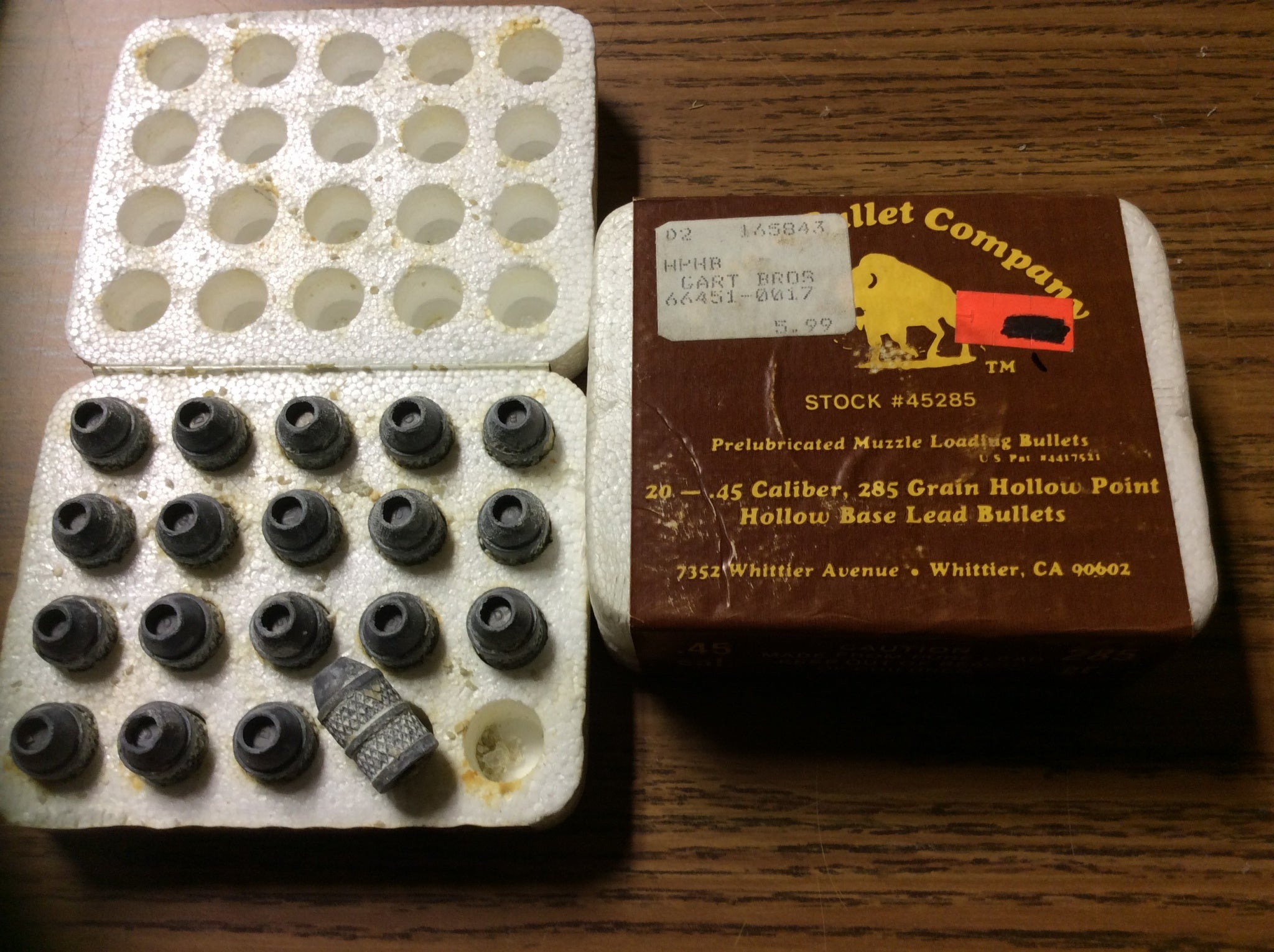I had discussed this a little on another thread but wanted to bring it up here as I hate to hijack someone else's thread. So here goes...
I use a Corbin's swaging press to swage a lot of my bullets. I do that for the Whitworth, Sharps and Enfield rifles. It beats casting but that's another topic for another day.
I am in the process of redesigning another Minie ball to send to Corbin to order another set of dies. The main difference in my design compared to one with grooves is that I put a knurled pattern on the outside of the bullet. Below is a photo of a swaged smooth sided bullet and one with a knurled pattern. The diameter of the bullet on the left is .575. With knurling the diameter is increased anywhere from .004 to .008. So the one on the right is .579. Needless to say it's a little tight in a fouled barrel.

Here is a poor drawing for my next design. The swaged diameter is .555.
I plan on making the knurling as deep as possible. After knurling, the diameter should increase to .563. I like the knurling as it retains more lubricant than a grooved bullet. If the outside of the bullet retained the knurled pattern upon firing and travel down the bore, that would be a lot of drag.
However, we know that with skirt expansion and obturation the points on the knurling will flatten and the lubricant forced out of the crevices onto the rifling. So hopefully, the sides of the bullet will smooth out and drag decreased.
Please take a look at the bottom of the bullet. I'm thinking about having the swaging dies machined so that the bullet will have a radius on the corner of the bottom edge.
The reason for the radius is that when the bullet is being pushed down a fouled barrel, it will be easier for it to go past the fouling. In addition the granules of burnt powder/fouling may move aside of the bullet and fall into some of the crevices of the knurling.
My theory is that this may make it easier to push a bullet down a fouled barrel and also spread some of the lubricant along the bore as it goes down the bore.
Anyway, I would appreciate any criticism or comments before I submit this to Corbin. Thanks.

I use a Corbin's swaging press to swage a lot of my bullets. I do that for the Whitworth, Sharps and Enfield rifles. It beats casting but that's another topic for another day.
I am in the process of redesigning another Minie ball to send to Corbin to order another set of dies. The main difference in my design compared to one with grooves is that I put a knurled pattern on the outside of the bullet. Below is a photo of a swaged smooth sided bullet and one with a knurled pattern. The diameter of the bullet on the left is .575. With knurling the diameter is increased anywhere from .004 to .008. So the one on the right is .579. Needless to say it's a little tight in a fouled barrel.

Here is a poor drawing for my next design. The swaged diameter is .555.
I plan on making the knurling as deep as possible. After knurling, the diameter should increase to .563. I like the knurling as it retains more lubricant than a grooved bullet. If the outside of the bullet retained the knurled pattern upon firing and travel down the bore, that would be a lot of drag.
However, we know that with skirt expansion and obturation the points on the knurling will flatten and the lubricant forced out of the crevices onto the rifling. So hopefully, the sides of the bullet will smooth out and drag decreased.
Please take a look at the bottom of the bullet. I'm thinking about having the swaging dies machined so that the bullet will have a radius on the corner of the bottom edge.
The reason for the radius is that when the bullet is being pushed down a fouled barrel, it will be easier for it to go past the fouling. In addition the granules of burnt powder/fouling may move aside of the bullet and fall into some of the crevices of the knurling.
My theory is that this may make it easier to push a bullet down a fouled barrel and also spread some of the lubricant along the bore as it goes down the bore.
Anyway, I would appreciate any criticism or comments before I submit this to Corbin. Thanks.









